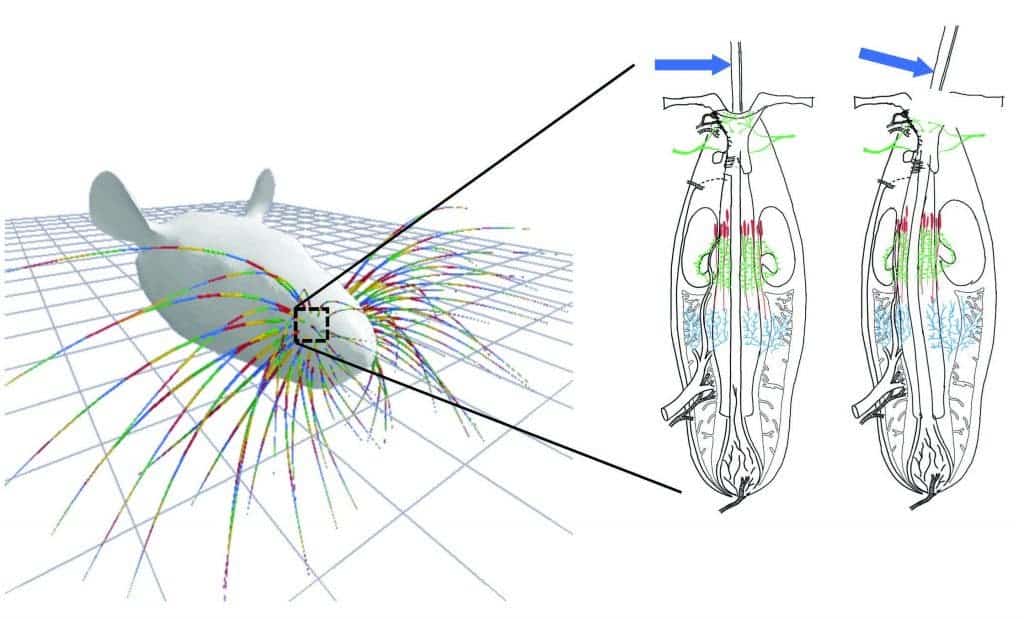
Whiskers can come in different shapes and sizes, but they’re all essentially specialized bits of mammalian hair that work as tactile sensors. Whiskers don’t actually “feel” anything, but they transmit information to sensory cells. When air flows against a whisker or when the whisker encounters an object, the sensitive hair moves and stimulates the nerves in the hair follicle — all the sensors are in the follicle.
The magic happens at the base of the whisker, where the sensing information is received and transmitted to the brain. But you can’t even see it, because this structure is hidden inside the follicle. Because this part is obscured, researchers find it very difficult to study it directly.
“The part of the whisker that triggers touch sensors is hidden inside the follicle, so it’s incredibly difficult to study,” said Northwestern’s Mitra Hartmann, senior author of the study. “You can’t measure this process experimentally because if you slice open the follicle, then the damage would change the way the whisker is held. By developing new simulations, we can gain insights into biological processes that cannot be directly measured experimentally.”
Hartmann and colleagues developed the first mechanical simulation of the whisker inside the follicle, which they combined with anatomical observations to better understand the structure and function of this whisker “root”.

They found that when whiskers touch an object, the follicle forms an “S”-shaped bend through which the whisker pushes or pulls on sensor cells, which then send the signal to the brain. According to the researchers’ models, this bending profile is likely similar regardless of whether the whisker moves to touch an object or the whisker is passively brushed by a moving object.
“Our model demonstrates consistency in the whisker deformation profile between passive touch and active whisking,” Luo said. “In other words, the same group of sensory cells will respond when the whisker is deflected in the same direction under both conditions. This result suggests that some types of experiments to study active whisking can be done in an anesthetized animal.”
Although the model is based on biological data from rats, researchers believe this applies to all whiskered animals.
“The sense of touch is incredibly important to nearly everything we do in the world, yet it is very difficult to study touch using hands,” Hartmann said. “Whiskers provide a simplified model to understand the complex, mysterious nature of touch.”
This is not the first study to look at whisker parameters. A 2016 paper showed how rats use whiskers to study the shape of objects and how neurons communicate whisker-detected touch.
Journal Reference: Luo Y, Bresee CS, Rudnicki JW, Hartmann MJZ. Constraints on the deformation of the vibrissa within the follicle. PLoS Comput Biol 17(4): e1007887. doi.org/10.1371/journal.pcbi.1007887






